December 23, 2023
Venetian plaster is making a dramatic comeback, thanks in part to companies like California Wall Design (CWD) who have mastered this classical decorative finish. With its rich, layered textures and customizability, it’s no wonder everyone wants a bit of this Old-World charm for their walls.

An Ancient Technique Made New Venetian plaster dates back over 1500 years to Italy, taking its name from the ornately finished walls of Venice. It fell out of fashion for decades but has surged back into luxury homes and upscale spaces. California Wall Design recognized the artistic potential early on.
“We saw plaster as the optimal medium allowing both breathtaking beauty and versatility within a space,” says CWD founder Steve March. “There’s an elegance from the sheen and depth achievable.”
Whether a porcelain-smooth troweled look or bold travertine finish, Venetian plaster has drama. Mother-of-pearl aggregates or real gold leaf accents provide showstopper embellishments. Yet it remains organic and touchable unlike stone, metal or glass surfaces.
The California Wall Design Difference
Over 20 years producing bespoke plaster creations for A-list clients has honed CWD into an industry leader. Every project starts by consulting directly with customers on the aesthetic vision for the space. This specialization is why top designers and architects refer discerning clients to California Wall Design time and again for impressive Venetian plaster installations.
Their master plaster artisans transform basic wall substrates into works of wearable art. There is a level of finesse in techniques modern tradesmen rarely acquire. “We bring out depth and enhance architectural elements of a room with color, sheen, texture not achievable by just anyone,” March notes. “Our plasterers are truly keeping heritage arts alive.”
Whether a restaurant feature wall, boutique hotel lobby, or luxury residential library, California Wall Design has real mastery elevating environments with the beauty of Venetian plaster. This is decorative finishing at its finest.
February 15, 2023
When decorating or renovating a house, it can be hard to decide between paint and wallpaper. Both options are great to beautify your walls and add character to your interior.
However, there are several aspects to be considered before making the choice. It all comes down to your personal preferences, but it helps to contemplate the pros and cons of both in advance. Colors, Patterns, and Textures Modern wallpapers are quite versatile and customizable. You can choose lavish landscapes, intricate designs, or something more subtle.
For example, you can feel close to nature by opting for a forest or jungle themed wallpaper; you can also order custom made wallpaper for the kids’ room that features all their favorite cartoon characters. If you like your walls plain, matted, and monotone, choosing paint makes more sense. Paint comes in an endless variety of colors; texture can be added and you can use multiple shades for the same room.
Light and neutral paint colors are the norm, as they make a room look more spacious and the walls are easy on the eyes. On the contrary, wallpaper tends to make the room look compact or cozy with its complex designs and color schemes. Then again, dark paints and pastel colored wallpaper might have the opposite effect. Preparation and Installation You might think that wallpaper doesn’t need preparation and it can be put up quickly, but that is not how it works.
Whether you choose paint or wallpaper, everything depends upon the condition of the starting surface. If the walls already have a prior finish and are relatively smooth, the task to paint or install wallpaper becomes easier. If you have to strip down worn-out wallpaper first, that can be quite a tiresome and time consuming process. You may even have to call in a professional to prevent causing damage to your walls. However, minor irregularities or holes in the wall are easily covered by new wallpaper.
Paint requires a much cleaner and smoother surface, or the end result won’t turn out to be flattering. You may have to get rid of old peeling paint, as well as even out imperfections with spackle.
Application of paint is competitively easy, yet let us not forget that you have to wait for it to dry and then apply a second (and sometimes third) coat to attain the desired finish. Installing wallpaper takes more effort because you have to add adhesive glue, as well as get cutting and placement right; nonetheless, it saves time as the task can be completed in a single session. Total Cost The cost of paint or wallpaper you use depends upon the quality. Cheap and expensive variants are available for both.
However, paint can be assumed to be more cost effective because one bucket of paint covers a lot more surface area than one roll of wallpaper. If you are taking the DIY approach, paint is the obvious choice. You may need a professional for wallpaper installation, and there’s also the cost of adhesive glue to put it up. If you want to sell real estate, a fresh coat of paint or wallpaper replacement is one of the cheapest ways to increase its aesthetic and market value. Durability Good quality wallpaper is increasingly resistant to wear and tear, as compared to standard paint.
If you have kids and/or pets in the house, wallpaper will last longer. Wallpaper surface is easier to clean, whereas it’s almost impossible to remove stains from a painted wall. Paint dulls or starts peeling over time, and makes the space appear unsightly.
Wallpaper is quite tough, but not suitable for high moisture environments, such as in the kitchen and bathrooms. Combination of Both Who says you can only choose one? Many modern homes exhibit a combination of paint and wallpaper, which looks very elegant. Wallpaper is usually chosen for the accent wall, and the remaining walls are covered in a coat of paint that complements the colors in the wallpaper design.
Paint alone may seem bland, and wallpaper everywhere can be too much, so the combination creates a perfect balance.
Author Bio John Adams is a lifestyle blogger who loves creating content related to self-development and home improvement. He loves to share personal and original experiences with readers, and always welcomes their feedback or constructive criticism.
January 07, 2023
Gilding is the process of applying a thin layer of gold or other metal leaf to a surface, and it has been used for centuries to add a touch of luxury and elegance to everything from furniture and picture frames to buildings and artwork. Silver leaf, in particular, has a long and fascinating history, and it is still used today in a variety of creative and decorative applications.

The use of silver leaf dates back to ancient civilizations, where it was used to decorate the clothing and jewelry of the wealthy and powerful. In ancient Rome, for example, silver leaf was applied to sculptures, buildings, and other objects as a symbol of wealth and status.
Over the centuries, the art of gilding has evolved and spread to different parts of the world, with various cultures and civilizations developing their own techniques and styles. In Europe, for example, gilding was a popular form of decoration during the Middle Ages, and it was used to adorn everything from religious relics and manuscripts to furniture and household objects.

Today, silver leaf is still used in a variety of decorative applications, including interior design, architecture, and artwork. It is also used in the production of silver foil, which is used in a wide range of products, from food packaging to cosmetics and electronics.
If you are interested in learning how to apply silver leaf, there are a few basic steps you will need to follow. First, you will need to prepare the surface you will be gilding by cleaning it and making sure it is smooth and even. Next, you will need to apply a layer of gesso, which is a thin, white, opaque paint that helps the leaf adhere to the surface. Once the gesso is dry, you can apply the silver leaf using a soft brush or a gilding tool. It is important to handle the leaf carefully, as it is very delicate and can easily tear or crease.

To finish the gilding process, you will need to burnish the leaf to make it shine. This can be done using a soft, dry cloth or a tool like a leather burnisher. You can also use a sealant to protect the leaf and give it a longer lifespan. Overall, silver leaf is a versatile and beautiful material that has been used for centuries to add a touch of elegance and glamour to a wide range of objects and surfaces. Whether you are a professional gilder or a DIY enthusiast, learning how to apply silver leaf is a rewarding and satisfying process that can help you create stunning, one-of-a-kind pieces.
Also you could hire California Wall Design. We can work one on one with you to create a beautiful silver leaf project.
December 18, 2022
Venetian plaster is a type of plaster finish that is used to give surfaces a smooth, polished look. It is named after the city of Venice, Italy, where it has been used for centuries to finish walls and other surfaces in buildings.
The history of Venetian plaster can be traced back to ancient Rome, where it was used to create smooth, polished finishes on walls and other surfaces. In the Renaissance period, the technique was rediscovered and became popular in Italy, particularly in the city of Venice. Venetian plaster was used to finish the walls of palaces, churches, and other public buildings, as well as the interiors of private homes.
One of the key features of Venetian plaster is that it can be polished to a high shine, which gives it a luxurious and elegant look. This finish was achieved through the use of various techniques, including the use of specialized tools and multiple layers of plaster applied and polished in succession. In addition to its visual appeal, Venetian plaster was also valued for its durability and resistance to moisture, making it well-suited for use in humid environments like Venice.
Over time, the use of Venetian plaster spread beyond Italy and became popular in other parts of Europe and North America. Today, it is used in a variety of settings, including residential and commercial buildings, to create a luxurious, polished finish.
To apply Venetian plaster, a thin layer of plaster is applied to the surface using a trowel or spatula. The plaster is then smoothed and polished to create a smooth, shiny finish. The process is typically done in multiple layers, with each layer being polished before the next is applied. Venetian plaster can be tinted with various pigments to create a wide range of colors and finishes.
The technique has evolved over the centuries, and there are now many different variations of Venetian plaster available, each with its own unique characteristics and applications.
If you would like to hire California Wall Design, we can do masterful Venetian Plaster applications.
October 06, 2019
Best Painting Contractors In Los Angeles To Look Forward To
Are you looking for an excellent painting job for your residential place or your commercial place? Do you demand a full-fledged licensed, bonded and insured painting service? Are you a resident of Los Angeles?
Then, without further ado, you must contact us for all kinds of painting services! We pledge to provide top-notch painting services for the interiors as well as exteriors. Once you contact us, it is our responsibility to ensure that you get whatever you require.
We have always kept our customers as our number one priority and we mean it! Let’s have a look at a few areas in which we are expert at:
Interior Painting
The dull and boring spaces, with no colors and lacking uniqueness, you must get weary by looking at it. You would want to add colors and make the space bright, dazzling and cheerful so that you can get motivation from it.
In your home, you require a certain atmosphere that would make you feel lively and upbeat. There has to be something welcoming about your home because of which you are inclined towards coming back to your home. Thus, you have to make sure that your home is vividly sparkling in multiple colors.
Apart from your home, your office space needs serious attention in terms of colors. Your office is home to many. Therefore, you have to make it vivacious and spirited so that the workers gain courage and attention just by having a glance at it!
Hence, you must come to us for all sorts of interior painting jobs as we are highly qualified and thorough professionals who would deliver commendable overhauling of your property!
Exterior Painting
If interiors are important then exteriors carry immense importance too! You cannot repair the inner side of the house and leave the interiors on their own. In fact, the exterior part of the property takes greater effect as this side has to deal with harsh weather, blowing winds, and multiple other hitches.
Considering all the hindrances, we ensure to provide exterior painting service that you would have never imagined. Similar to the interior painting service, we go to any extent and produce quality results for all sorts of commercial and residential properties.
Our professionals would make sure that the outside of the property looks exceptional in terms of colors, look and feel. People who would pass by the property would definitely leave a word of praise, bearing in mind the great painting job of the property.
Points To Note:
The paint accessories and all the other tools that we select are pristine in quality that would leave long-lasting effects on your property. Apart from that, we ensure a price-beating a policy that you can definitely check out and compare with other painting contractors working in Los Angeles.
We provide customized painting services as well. You come to us and tell u about your requirements, we would do anything in order to deliver tailor-made painting jobs.
October 06, 2019
How to do Gold Leafing, its history and techniques:
Every dark cloud has a silver lining- or better yet, leafing
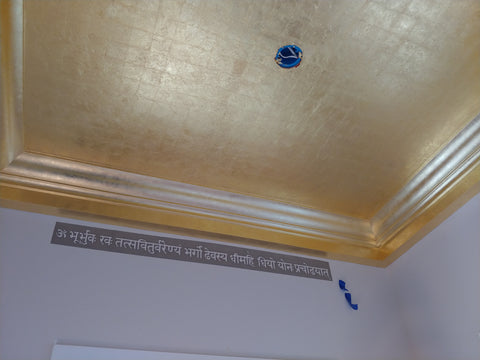
Have you ever found yourself marveling over beautiful gold-adorned mansions in Los Angeles? Or maybe you've felt the desire to have a beautifully decorated house like those in Beverly hills? It would certainly be a dream come true. Yearn no more, because a marvelous interior could be the highlight of your very own house by using simple techniques that could be easily learned online. Accessories with golden, silver or copper embellishments, to intricate furniture designing, can easily be done at home by your own hands. With a little bit of practice, you can make your house look stunningly beautiful. All you need to learn is the art of gliding with easily accessible gold, silver, or copper leaf paper.
It’s as easy as we’re making it sound like
It is an easy approach to interior design. Gold, silver, or copper leaf is basically a metal hammered until it’s as thin as paper. It’s a much more affordable option to get a shiny touch to your house, rather than using solid gold. Any surface may be coated to give a dazzling new look to it. This includes window frames, shelves, pottery, or any other accessory that adds to the beauty of your vicinity.
The old, golden days
It’s a technique that has been practiced since 400 AD when gold became an item of popular use in Byzantine and Roman churches. The walls of these churches were coated with gold leaf, giving them a royal look. These ancient buildings add scenic beauty to their respective countries and attract flocks of tourists from all over the world. Gold leaf was highly regarded for its ethereal aesthetic. It was used to decorate statues of gods, precious amulets, and other holy objects placed in pharaoh’s tombs in Egypt. Roman medallions and pendants were rendered in gold leaf. Japanese artists integrated gold leaf into their paintings in the 16th and 17th centuries. Even today, designers continue to use the medium in a diverse range of artwork.
Let us get started.
As mentioned before, leafing is an easy process. There is no rocket science involved. Do you recall doing paper collage back in kindergarten? It’s pretty much the same thing, just a hundred times more beautiful.
All you need is:
A vast variety of karats and shades of Gold leaf are available at stationery shops. The most commonly used gold is 22-karat yellow gold. However, metal leaf can also be used. These are thin sheets of metal of any color that does not contain any real gold. Other alternatives are silver leaf, bronze leaf, and copper leaf. Whatever you go for depends on the aesthetic you are trying to achieve. It will be the epitome of beauty, nonetheless.
Any soft, flat brush may be used. Any type of strong colorless adhesive may be used for gluing the gold leaf to a flat, even surface seamlessly. A standard spray adhesive, Spray adhesive is a bit messy and more difficult to control, but also gives a nice finish. Water-based adhesives give the best results.
In the end, comes a gliding brush and setting spray. These are both readily available in art stores in most places as well as stores online. Blick, Jerry's Artarama, North Light Shop, Plaza Artist Materials, and Amazon are some of the most reputable art stores where high-quality brushes are available. A side note, however: a simple flat brush gives a pretty effect if used correctly. When it comes to setting spray, a basic level lacquer spray is fit to seal the glow.
It's much easier than digging up gold
The procedure is quite simple. It’s an enjoyable and soothing experience. You might fall in love with the catharsis, even.
Why use gliding?
Gliding is an excellent choice when it comes to personalizing your house. After all, any sort of metal leaf may be used, shimmering gold, radiant silver, grand bronze, or cozy copper. Accessories such as lamplights or flower pots may be glided to match the furniture- or add a little contrast. This way or the other, leafing may be the reason why your friends and family might walk into your house with awe.
It’s approved by those up in the Hills
Gold leafing is trending as well. Many huge companies specializing in ‘specialty finishes’ are offering custom-designed gliding in Los Angeles. They specifically target the gaudiest of mansions to showcase perfection in gold, silver, or copper leafing, gaining tons of buyers worldwide. California Wall Design is one of the major companies servicing gold leafing in Beverly hills, claiming that their work has turned houses into some of the most beautiful ones out there.
We bet that you will never regret
Gold and silver leafing is definitely a sensible, cost-efficient choice both for the rich out in the Hills or commoners down the street. It is an easy DIY, and it looks magnificent as well. Interior design is not something that can only be perfected through years of study. Simple tricks to decorate your house can elevate its atmosphere and make your life beautiful and worthwhile.
September 26, 2019
Here is a collection of some photos that we took during the work.
These jobs are mostly in Beverly Hills, Venice, Hollywood, Los Angeles, Bel-Air
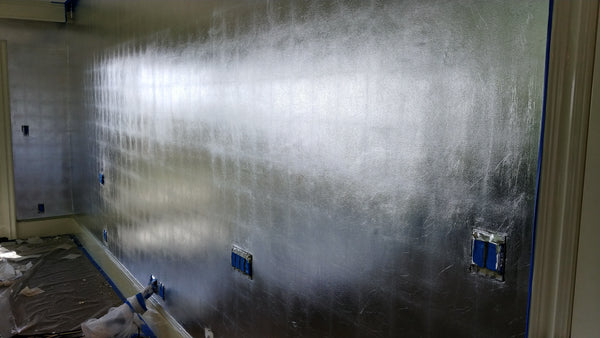
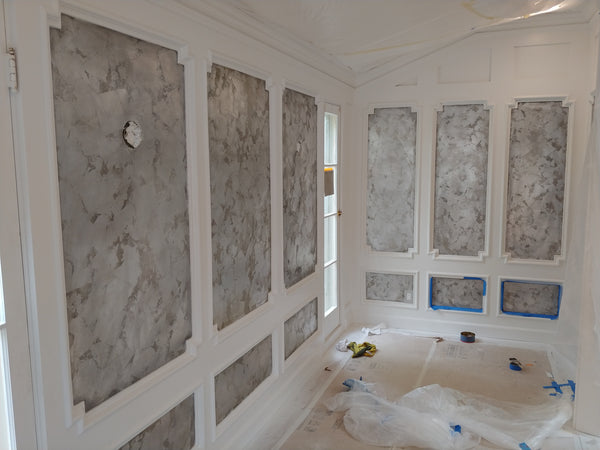
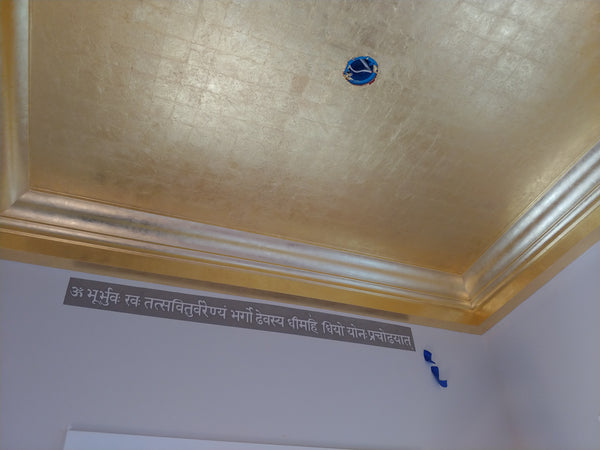

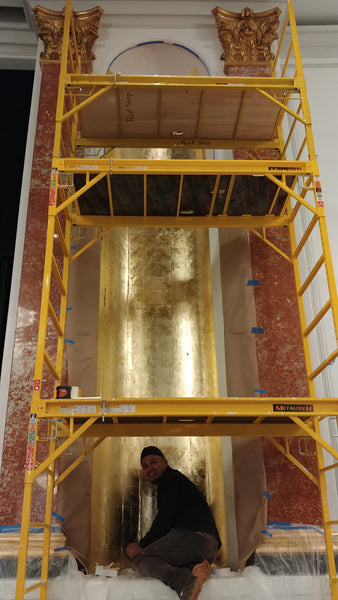
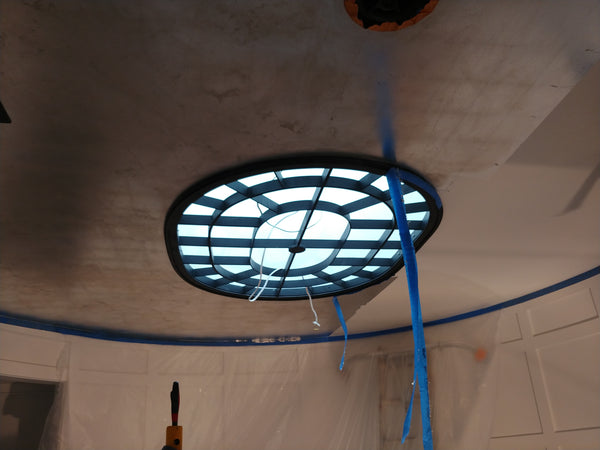
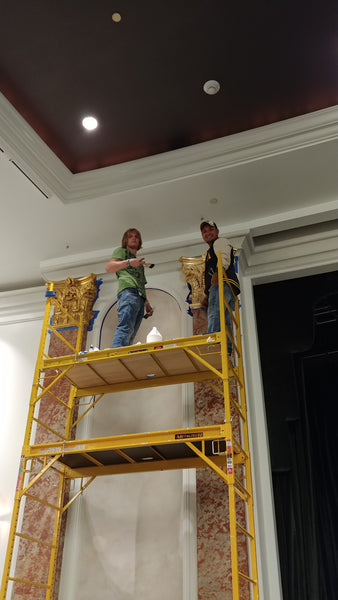
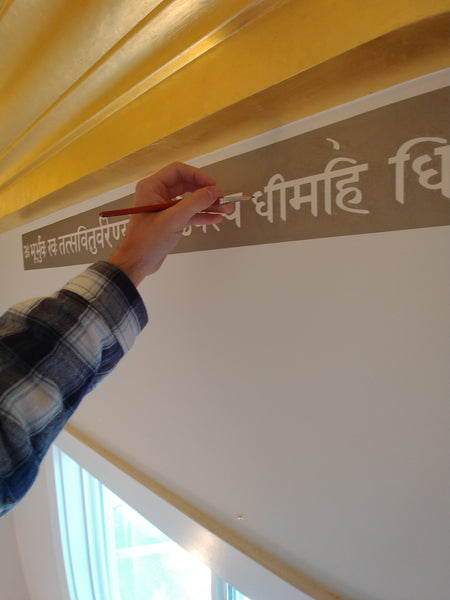
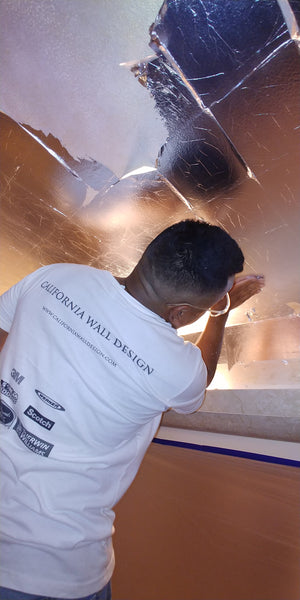
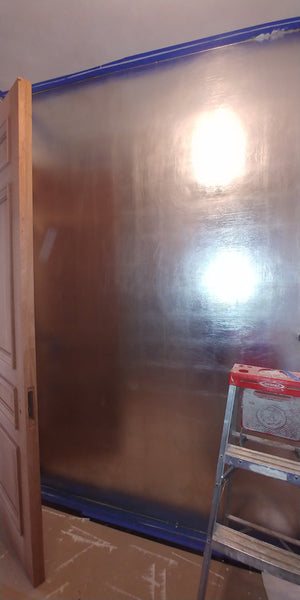
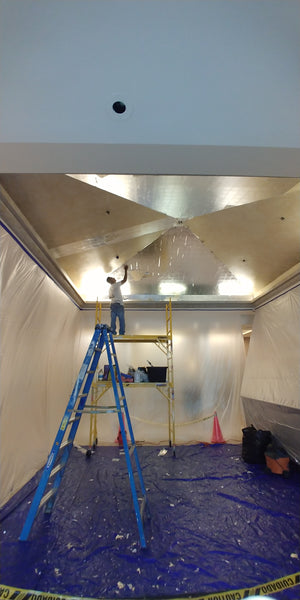
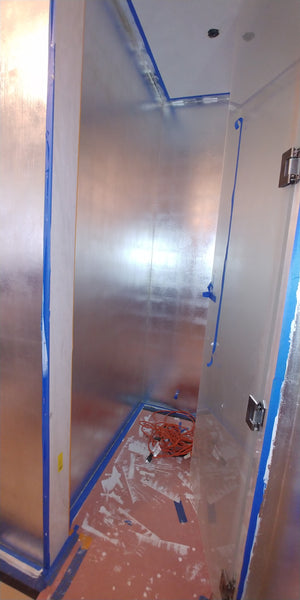
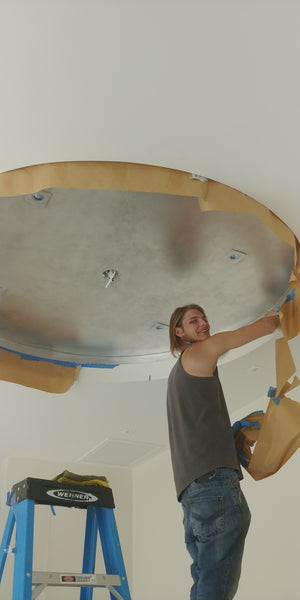
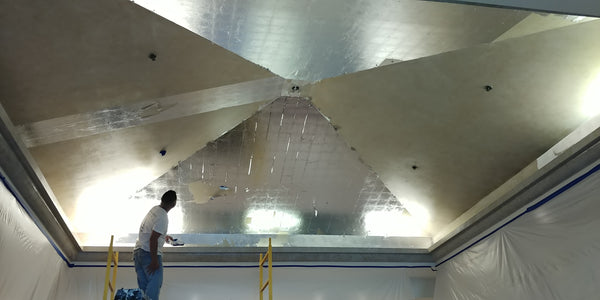
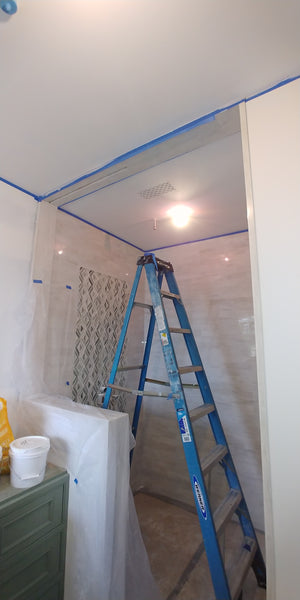
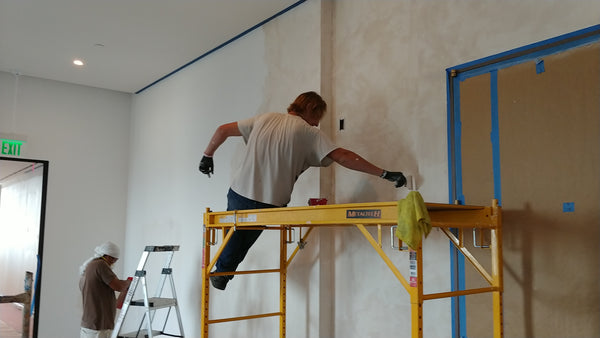
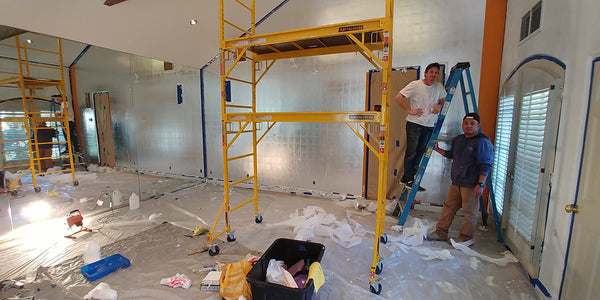
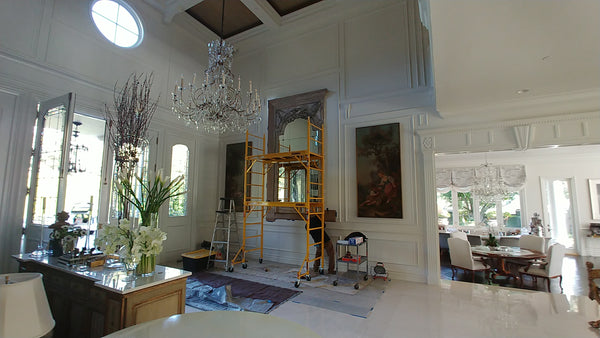
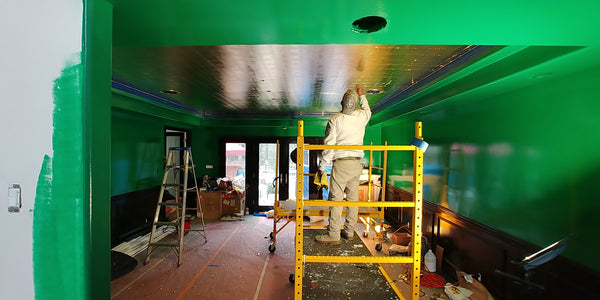
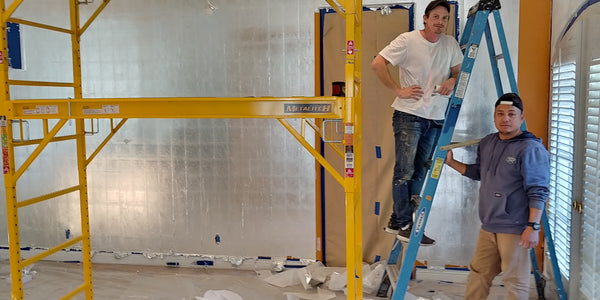
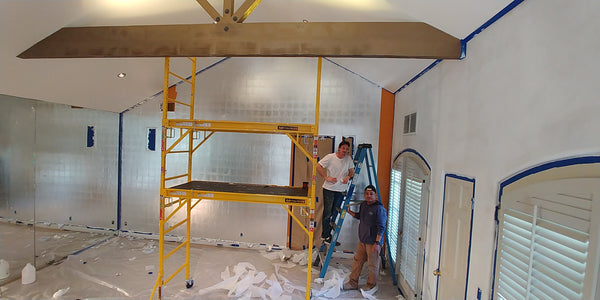
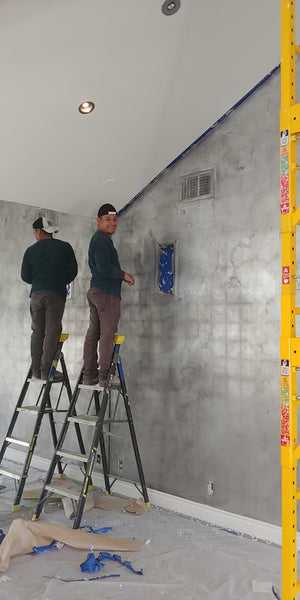
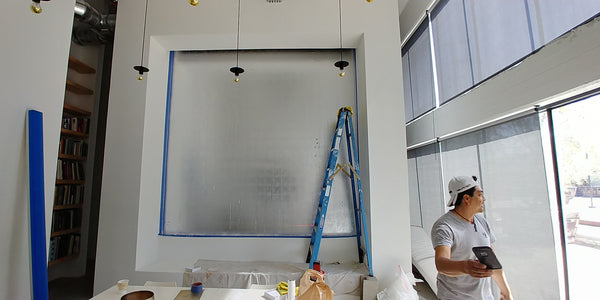
March 03, 2017
The term gilding covers a number of decorative techniques for applying fine gold leaf or powder to solid surfaces such as wood, stone, or metal to give a thin coating of gold. A gilded object is also described as "gilt". Where metal is gilded, it was traditionally silver in the West, to make silver-gilt (or vermeil) objects, but gilt-bronze is commonly used in China, and also called ormolu if it is Western. Methods of gilding include hand application and glueing, chemical gilding, and electroplating, the last also called gold plating.[1] Parcel-gilt (partial gilt) objects are only gilded over part of their surfaces. This may mean that all of the inside, and none of the outside, of a chalice or similar vessel is gilded, or that patterns or images are made up by using a combination of gilt and un-gilt areas.
Herodotus mentions that the Egyptians gilded wood and metals, and many such objects have been excavated. Certain Ancient Greek statues of great prestige were chryselephantine, i.e., made of gold (for the clothing) and ivory (for the flesh); these however, were constructed with sheets of gold over a timber framework, not gilded. Extensive ornamental gilding was also used in the ceiling coffers of the Propylaea. Pliny the Elder informs us that the first gilding seen at Rome was after the destruction of Carthage, under the censorship of Lucius Mummius, when the Romans began to gild the ceilings of their temples and palaces, the Capitol being the first place on which this process was used. But he adds that luxury advanced on them so rapidly that in very little time you might see all, even private and poor people, gild the walls, vaults, and other parts of their dwellings. Owing to the comparative thickness of the gold leaf used in ancient gilding, the traces of it that remain are remarkably brilliant and solid. Fire-gilding of metal goes back at least to the 4th century BC, and was known to Pliny (33,20,64–5), Vitruvius (8,8,4) and in the Early Mediaeval period to Theophilus (De Diversis Artibus Book III).
In Europe, silver-gilt has always been more common than gilt-bronze, but in China the opposite has been the case. The ancient Chinese also developed the gilding of porcelain, which was later taken up by the French and other European potters.
Modern gilding is applied to numerous and diverse surfaces and by various processes; those used in modern technology are described in gold plating. More traditional techniques still form an important part of framemaking and are sometimes still employed in general woodworking, cabinet-work, decorative painting and interior decoration, bookbinding, and ornamental leather work, and in the decoration of pottery, porcelain, and glass.
Mechanical gilding includes all the operations in which gold leaf is prepared, and the processes to mechanically attach the gold onto surfaces. The techniques include burnishing, water gilding and oil-gilding used by wood carvers and gilders; and the gilding operations of the house decorator, sign painter, bookbinder, the paperstainer and several others.
Polished iron, steel and other metals are gilded mechanically by applying gold leaf to the metallic surface at a temperature just under red-hot, pressing the leaf on with a burnisher, then reheating when additional leaf may be laid on. The process is completed by cold burnishing.
"Overlaying" or folding or hammering on gold foil or gold leaf is the simplest and most ancient method, and is mentioned in Homer's Odyssey (Bk vi, 232),[2] and the Old Testament. The Ram in a Thicket of about 2600–2400 BCE from Ur uses this technique on wood, with a thin layer of bitumen underneath to help adhesion.
The next advances involved two simple processes. The first involves gold leaf, which is gold that is hammered or cut into very thin sheets. Gold leaf is often thinner than standard paper today, and when held to the light is semi-transparent; in ancient times it was typically about 10 times thicker than today, and perhaps half that in the Middle Ages.
If gilding on canvas or on wood, the surface was often first coated with gesso. "Gesso" is a substance made of finely ground gypsum or chalk mixed with glue. Once the coating of gesso had been applied, allowed to dry, and smoothed, it was re-wet with a sizing made of rabbit-skin glue and water ("water gilding", which allows the surface to be subsequently burnished to a mirror-like finish) or boiled linseed oil mixed with litharge ("oil gilding", which does not) and the gold leaf was layered on and left to dry. Those gilding on canvas and parchment also sometimes employed stiffly-beaten egg whites ("glair"), gum, and/ or Armenian bole as sizing, though egg whites and gum both become brittle over time, causing the gold leaf to crack and detach, and so honey was sometimes added to make them more flexible.
Other gilding processes involved using the gold as pigment in paint: the artist ground the gold into a fine powder and mixed it with a binder. Then the gold was applied in the same way as with any paint. Sometimes, after either gold-leafing or gold-painting, the artist would heat the piece enough to melt the gold slightly, ensuring an even coat. These techniques remained the only alternative for materials like wood, leather, and the vellum pages of illuminated manuscripts.

Chemical gilding embraces those processes in which the gold is at some stage of chemical combination. These include:
In this process the gold is obtained in a state of extremely fine division, and applied by mechanical means. Cold gilding on silver is performed by a solution of gold in aqua regia, applied by dipping a linen rag into the solution, burning it, and rubbing the black and heavy ashes on the silver with the finger or a piece of leather or cork.
Source: Wikipedia
January 08, 2016
After months of work, this job has turned out to be one of the most beautiful houses California Wall Design has ever worked on. Timothy Corrigan is an amazing designer.
Our houzz page has a lot of photos of this job if anyone is interested in seeing them.
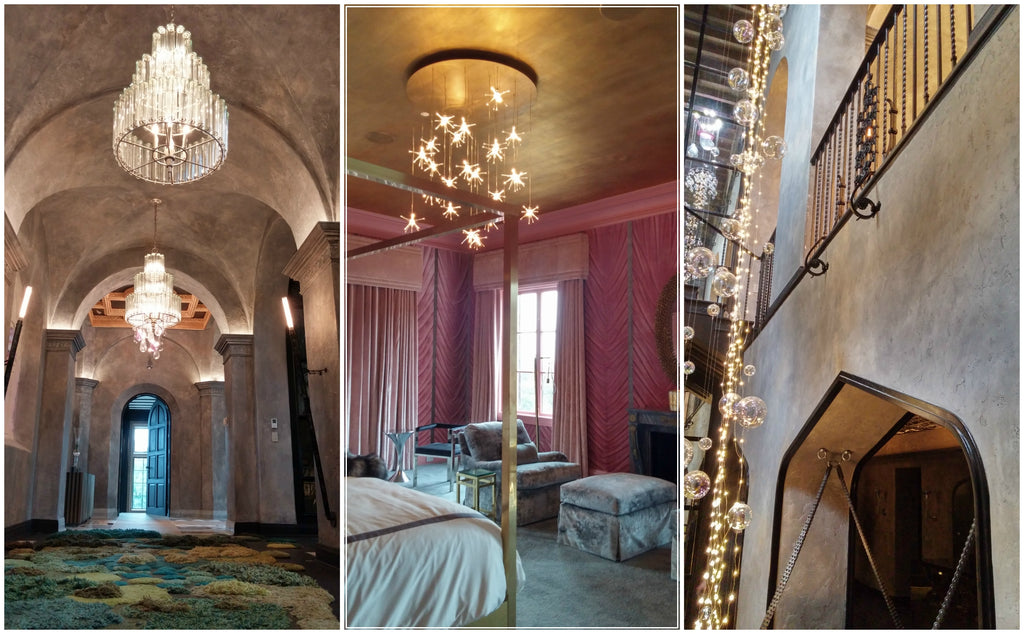
March 11, 2015
